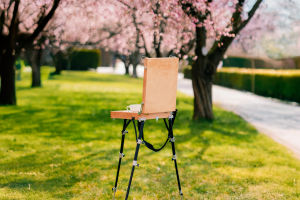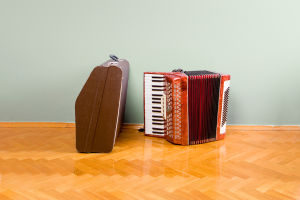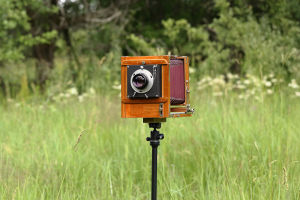Opera and drama, two powerful forms of performance art, have long coexisted within the theatrical world, each carrying its own unique characteristics and traditions.
While drama relies on dialogue and naturalistic acting to communicate emotions and stories, opera merges music, voice, and theatre to create a more grandiose and often emotional experience.
But what happens when these two forms of performance art collide? In this article, we'll explore how opera is pushing the boundaries of traditional drama and revolutionizing the way we experience storytelling.
The Traditional Structure of Drama and Opera
Before we dive into how opera transcends traditional drama, let's first understand the foundations of both forms. Drama, rooted in the ancient theatre, typically relies on spoken words and action to convey its narrative. Through dialogue, characters engage with each other, unraveling the plot and allowing the audience to connect emotionally. It's a straightforward form of storytelling that often uses realistic elements to mirror real-life scenarios.
Opera, on the other hand, emerged during the late 16th century as a combination of music, singing, and theatre. Unlike drama, where words are central, opera places as much emphasis on the music and vocal performance as it does on the plot. This combination of singing and acting heightens emotional expression and takes the audience on a heightened emotional journey, transcending the limits of spoken language.
Breaking the Boundaries: How Opera Transforms Drama
Opera is not bound by the same limitations that traditional drama faces. Where drama may rely on spoken word to express inner turmoil or external conflict, opera allows the characters to express their emotions through powerful arias and choruses. In opera, emotions are conveyed not only by what is said but by how it is sung. The voice can communicate the deepest sorrow, intense love, or triumphant joy in ways that spoken words alone might fail to convey.
This unique fusion of music and drama creates an immersive experience for the audience. For example, the iconic opera "Carmen" uses the music to emphasize the passion and tragedy of the characters, making the emotional impact far more profound than any spoken drama could. The use of orchestration elevates the mood, while the powerful voices of the singers add depth and intensity to the characters' inner lives.
Moreover, opera often incorporates grandiose set designs and spectacular staging. The combination of elaborate costumes, dramatic lighting, and stage effects allows opera to take audiences into an almost mythical world, where anything is possible. This element of spectacle often goes beyond what is achievable in a traditional drama production, adding another layer of wonder and awe to the experience.
Opera's Impact on Modern Drama
Opera's ability to break boundaries hasn't been confined to just its own realm; it has also influenced modern drama in several ways. Many contemporary playwrights and directors now draw inspiration from opera's visual and musical components. Productions like "Les Misérables" and "The Phantom of the Opera" fuse dramatic elements with musicality, proving that drama and opera are no longer separate entities but two forms of storytelling that complement each other.
We are seeing more and more theatre productions incorporating live music or operatic elements to enhance the emotional depth of a play. This crossover between the two mediums highlights how opera's unique fusion of music and performance has influenced contemporary theatre, encouraging innovation and pushing the boundaries of what we can expect from both forms of art.
Opera as an Emotional Catalyst
Another way in which opera breaks the boundaries of traditional drama is through its emotional power. The combination of vocal expression and orchestral music in opera can stir emotions in ways that spoken words alone cannot. For instance, the famous aria "Nessun Dorma" from Turandot communicates such raw emotion that it transcends the limitations of language. The sheer power of the human voice, supported by the orchestra, reaches into the soul of the audience, creating a deep emotional connection to the performance.
In drama, emotions are expressed through dialogue, but opera uses voice and music to amplify these emotions to a level that can feel almost overwhelming. Whether it's the soaring soprano or the deep, rich tenor, opera singers use their voices as instruments to communicate not just words but the very essence of the characters' emotions. This heightens the sense of drama and creates an atmosphere that traditional spoken theatre struggles to achieve.
The Future of Opera and Drama
Looking to the future, the boundaries between opera and drama will continue to blur as both art forms evolve. We may see more collaborations between operatic and dramatic traditions, creating hybrid performances that incorporate elements of both. With advancements in technology, we can also expect to see more visually stunning productions that combine music, technology, and drama to create immersive experiences for audiences.
Additionally, as audiences' expectations for theatre continue to grow, opera's influence on modern drama will likely expand. Today's theatre-goers are more accustomed to experiencing multimedia spectacles, and opera's use of music and visual design offers just the kind of dynamic experience that captivates modern sensibilities. Opera's emotional intensity and ability to push boundaries make it an exciting and relevant form of expression for contemporary audiences.
Conclusion: Embracing the Fusion of Opera and Drama
Opera blends music, theater, and visual art, transcending traditional drama with powerful vocals, orchestral scores, and stunning staging. It has reshaped modern theater, inspiring works that merge drama and musicality. Far from static, opera continues to evolve, enriching storytelling through emotional and artistic depth.
Do you think opera and drama will keep influencing each other, or will one overshadow the other? Share your thoughts!


